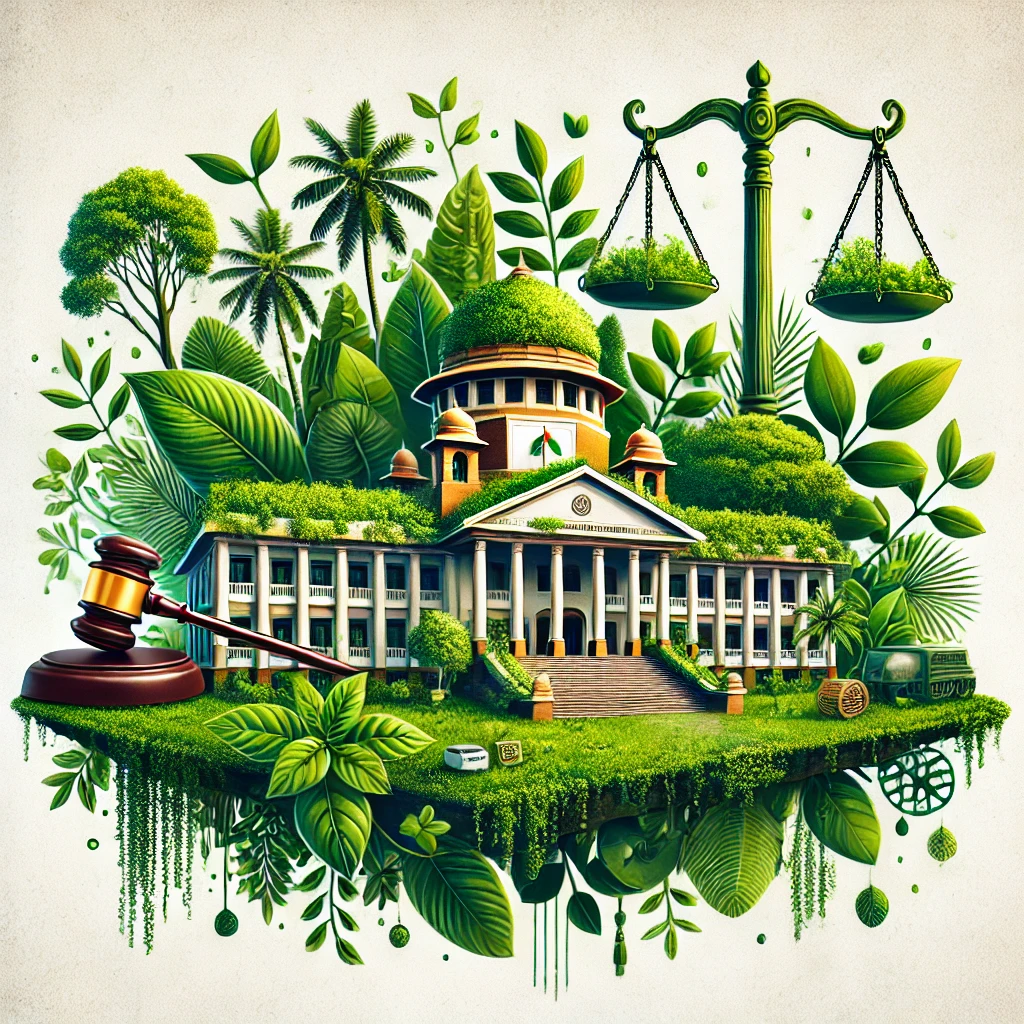Role of Judiciary in Environment Protection
Role of Judiciary in Environment Protection
Introduction
The judiciary plays a crucial role in protecting the environment in India by interpreting laws, enforcing constitutional provisions, and expanding legal remedies to safeguard environmental rights.
Constitutional Basis
Article 48A (Directive Principles of State Policy):
Directs the State to protect and improve the environment and safeguard forests and wildlife.
Article 51A(g) (Fundamental Duties):
Imposes a duty on every citizen to protect the natural environment.
Article 21 (Right to Life):
Interpreted by courts to include the right to a healthy environment.
Judicial Activism in Environmental Protection
The Indian judiciary, especially the Supreme Court and High Courts, have adopted judicial activism to fill gaps in environmental laws and enforce environmental protection.
Key Roles Played by Judiciary
Expanding the Scope of Fundamental Rights
The courts have interpreted the right to life (Article 21) to include the right to a clean and healthy environment.
Public Interest Litigation (PIL)
Courts have allowed PILs to enable citizens or groups to file cases on environmental issues, broadening access to justice.
Precautionary Principle and Polluter Pays Principle
The judiciary has introduced these principles as part of environmental jurisprudence.
Enforcement of Environmental Laws
Courts ensure compliance with statutes such as the Environment Protection Act, Air and Water Acts, Forest Conservation Act, etc.
Constitution of Special Tribunals and Monitoring Committees
Courts have created bodies to monitor environmental compliance and manage hazardous activities.
Landmark Case Laws
1. M.C. Mehta v. Union of India (Oleum Gas Leak Case), AIR 1987 SC 1086
The Supreme Court held industries strictly liable for hazardous activities.
Introduced the Polluter Pays Principle.
Emphasized environmental protection as part of the right to life.
2. Vellore Citizens’ Welfare Forum v. Union of India, AIR 1996 SC 2715
Introduced the Precautionary Principle.
Expanded Polluter Pays Principle.
Highlighted sustainable development and environmental protection as constitutional mandates.
3. Rural Litigation and Entitlement Kendra v. State of U.P., AIR 1985 SC 652 (Chipko Case)
Emphasized conservation of forests and protection of ecology.
Strengthened environmental laws to preserve natural resources.
4. Subhash Kumar v. State of Bihar, AIR 1991 SC 420
Held that the right to live includes the right to a pollution-free environment.
5. T.N. Godavarman Thirumulpad v. Union of India, AIR 1997 SC 1228
Supreme Court took over forest conservation issues through continuous monitoring.
Played a key role in enforcing forest protection laws.
Summary of Judicial Contributions
| Role | Description |
|---|---|
| Expanding Fundamental Rights | Interpreting right to life to include environmental rights |
| PIL | Allowing public access to courts for environmental causes |
| Environmental Principles | Incorporating Polluter Pays and Precautionary Principles |
| Enforcement of Laws | Directing government and industries to comply with laws |
| Monitoring | Constituting committees and tribunals for ongoing supervision |
Explanation Without Case Law or Legal Jargon
The judiciary in India has been very active in protecting the environment. Courts have said that having a clean and healthy environment is part of the right to life, so they help enforce laws that protect nature.
If people or groups notice pollution or damage to the environment, they can approach the courts to take action, even if they are not directly affected. Courts have created special rules like making polluters pay for the damage they cause and being careful before allowing activities that might harm the environment.
The courts also keep an eye on how forests and wildlife are protected and have made sure industries follow




























0 comments